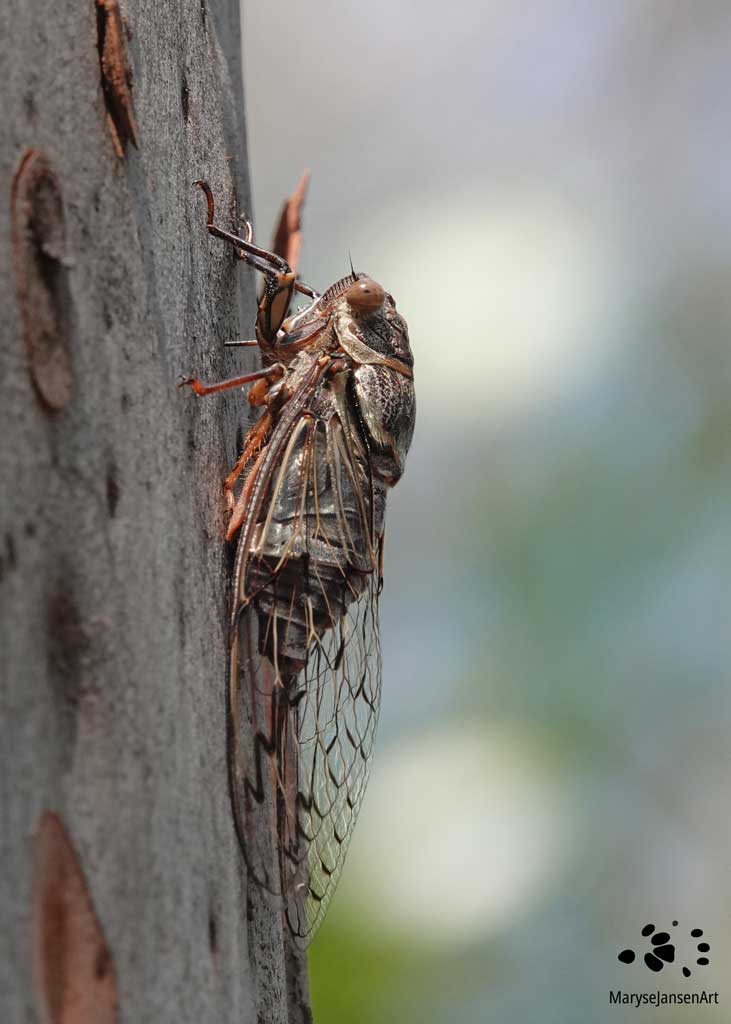Wildlife Photography with marysejansenart
The Loudest Insects in the World
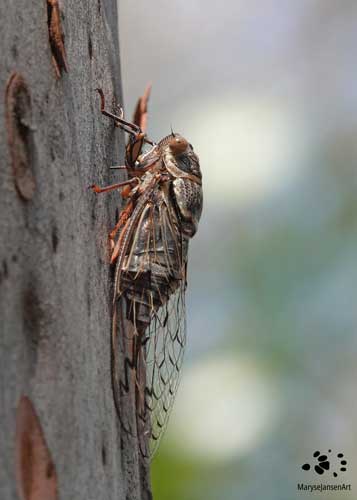
Table of Contents
A deafening summer concert
As I enter the forest today I am accompanied by a chorus of cicadas! It makes me smile, as I know it means it’s truly summer now. Cicadas emerge during late spring and summer. Their peak season is in November and December in Australia, they are only around for a couple of weeks. There are hundreds of species of cicadas in Australia and I can hear a bit of variety in song as I’m walking on, which means there are different species around. Some are even louder then others and a few times I have to protect my ears, because it is just too loud to be comfortable!
It is not just my sensitive ears, it has been measured that they are absolutely capable of breaking the rules on noise restrictions! But thankfully, it’s not that bad most of the time and a lot of people enjoy the sound of the cicadas.
Cicadas not so easy to spot
Easy to hear thus, but does that mean they are easy to spot as well? Not at all actually! They are often quite high up in the trees and well camouflaged. And their noise comes from all directions as they ‘sing’ together, which makes it quite hard to seek out one individual. And that is a great strategy for them to avoid being picked up by predators! Among their predators are often birds, and they too can suffer from the noise being too loud. It hurts their ears and it disturbs their own communication so they might stay away when it gets too much.
But, if you are persistent, you may be rewarded. A cicada is a very interesting insect to have a look at! Between all the different species they vary greatly in size: their wing spans may range from 2.5 to 15cm! So even the smaller ones are definitely visible to the naked eye.
Their bodies are stout and they have two pairs of wings. These are folded back along the side of their body when they are in rest. In most species, the wings are clear and strengthened by clearly visible, thin veins. The cicadas have large compound eyes on the sides of their head as well as three very small eyes on the top of their head.
How do cicadas sing?
I spot one on a nearby tree trunk and it’s not very high, so I can get a great look at it. You can see the result in the featured image! It is silent though and I would love to see how it makes it’s sound! I do spot one high, high up which is active, but much harder to see from that distance.
I remember I filmed an active one more close up on another occasion, check it out: singing cicada! What you can see in that video is the backside of the body moving up and down. A complex system is at work there where a pair of ribbed membranes are contracted and relaxed by internal muscles. On each contracting a pulse of sound is created.
The function of their song is that it is a mating call. It is produced by males only, and as each species has a different song, the females are able to find the right partner. Did you know that when they are singing, the males have to protect their own hearing organs so they won’t be deafened by their own noise!
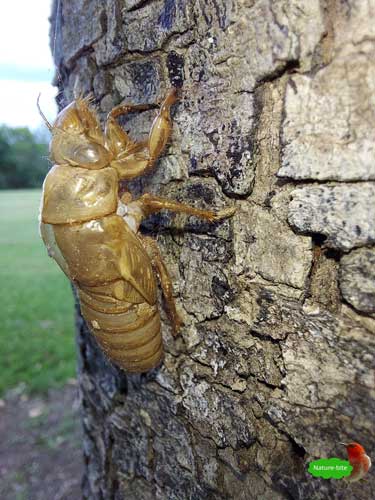
Life cycle of a cicada
Sometimes you may spot an empty cicada shell attached to a tree trunk. I photographed one for my Nature-bites project as you can see above. These are sheds from the final larval stage. As nymphs, cicadas live underground. They live off the sap of plant roots and shed and grow through various cycles. This process, depending on the species, can take many years! Common Australian species live underground for about six or seven years before they emerge!
When they finally dig their way up above the ground they shed for the final time. They prefer to do so in the evening as they are vulnerable to predators when drying – just like a butterfly emerging from its chrysalis! I think back to a camping trip during which I witnessed this phenomenon.
It was evening and suddenly these creatures emerged all around us: climbing up on tree trunks, but also on the tent, its poles, the outdoor table and chairs. It was amazing: thousands and thousands of cicadas began to shed their shells. And as they crawled out of their shells they had the most beautiful pastel colours, including soft pink and mint green! It was a feast for the eye! By the time they had dried they had all turned brown. I have dug up some images from this magical experience fot you to enjoy below!
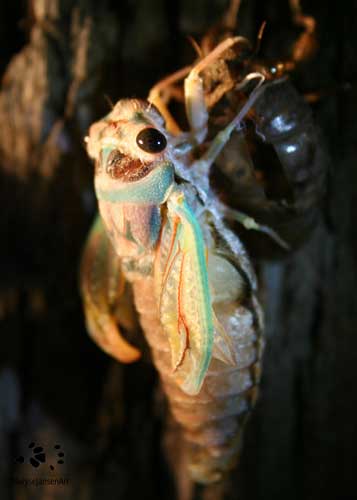
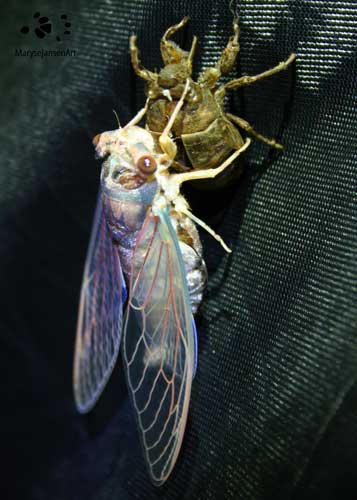
The adult life of a cicada is short and sweet and it’s all about finding a mate and reproducing. The female lays her eggs in plant stems. With her mouth pats she slices opening in the stem to create a space for the eggs. When the nymphs hatch, they drop on the ground and bury themselves into the earth. I see some similarities with the life cycle of a dragonfly, whose nymphs live in water for a long period of time, before they emerge as flying adults. Read more about that in my post about dragonflies!
To hear the chorus of cicadas sing, join me on my walk in the latest episode of ‘Come for a walk in the Australian Bush’:
If you are interested in purchasing ‘Symbol of Summer’ or would like to see what the image looks like on the various products, please head to my shop. If you prefer ‘Cicada Emerging’, click shop here.

